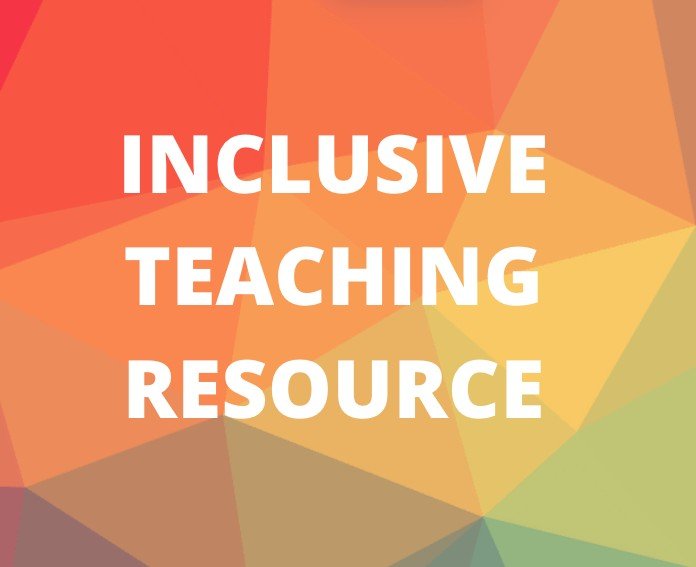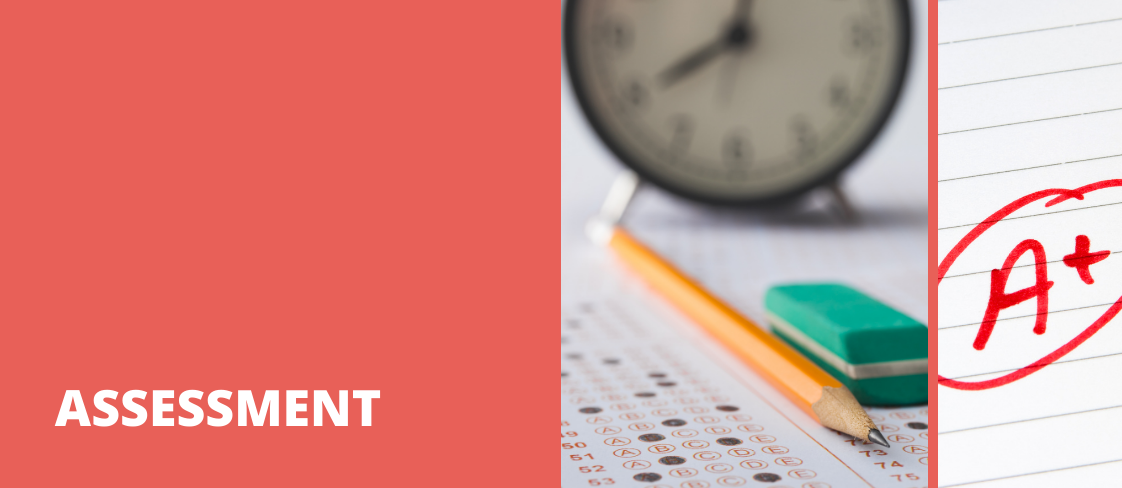Assessment
Assessment
Assessment
The "Assessment" section of the Inclusive Teaching Resource offers strategies to integrate equity into your evaluation, grading, and assessment practices. While not every strategy will work in every teaching and learning context, we offer ideas like transparency and centering learning that are adaptable in any classroom.
You might browse the content below, or use the following table of contents to navigate to a particular suggested practice.
Transparent Learning Objectives
Give students a clear understanding of the purpose of the course as a whole, as well as of how individual lessons and assignments support that purpose.
Explanation and/or Examples
List clear course learning objectives in syllabi, as well as in individual course modules.
List clear learning objectives for larger assignments. Communicate what you hope students will learn by completing the assignment and what skills it will help them develop.
Communicate to students the relevance of learning outcomes and related activities beyond the classroom.
Resources
TILT Higher Ed Examples and Resources, Transparency in Learning and Teaching Project) (Website)
Checklist for Designing Transparent Assignments, TILT Higher Ed (PDF)
Revised Bloom’s Taxonomy Assignment Cues, TILT Higher Ed (PDF)
Instructional Alignment
Ensure that assessments are aligned to learning outcomes and that the learning outcomes are supported by course material, lessons, and teaching strategies.
Explanation and/or Examples
Design assessments that focus on criteria that have been explained or taught.
Carefully consider what portion of the grade will be determined by grammar, mechanics, tone, vocabulary or style, as well as whether students have been prepared for this.
Interrogate the ways that your assessments may be built around cultural assumptions or may require prior knowledge that not all students have access to (the hidden curriculum). Revise assessments in ways that avoid this assumed knowledge.
Resources
Why Should Assessments, Learning Objectives, and Instructional Strategies Be Aligned?, Carnegie Mellon University, Eberly Center - Teaching Excellence & Educational Innovation (webpage)
Formative Assessment
Provide opportunities for informal or low-stakes practice and application of skills and knowledge, as well as feedback on how students might improve their work before the formal or higher-stakes assessment occurs.
Explanation and/or Examples
Give students opportunities to improve their performance based on feedback (e.g., revision, a high-stakes assignment that builds on one or more low-stakes assignments).
Resources
What Is the Difference between Formative and Summative Assessment, Eberly Center, Carnegie Mellon University
Design for Success
Design assignments to encourage intrinsic motivation and to support student success.
Explanation and/or Examples
When creating assignments, identify opportunities for student choice that foster meaningful engagement and demonstration of learning. For example:
- Present more than one assignment option;
- Present options for expressing learning in different formats or modalities
For larger assignments, design “scaffolds” that break assignments into smaller tasks. Present opportunities for students to practice, to receive feedback, and to revise and resubmit work.
Resources
Instructional Scaffolding to Improve Learning, Center for Innovative Teaching and Learning, Northern Illinois University (Web page)
Scaffolding and Sequencing Writing Assignments, The Writing Center, University of Colorado-Denver, Anschutz Medical Campus (PDF)
Sequencing and Scaffolding Assignments, Sweetland Center for Writing, University of Michigan (Web page)
Transparent Grading
Provide students with sufficient information to understand how their grade is assigned. When possible, discuss with students how grading will be done.
Explanation and/or Examples
Clearly communicate assignment criteria, provide examples of assignments which successfully demonstrated the learning objectives being assessed, use rubrics as communication tools while still providing flexibility.
Encourage students to discuss their grade with you throughout the course.
Consider carefully how or if attendance, participation and improvement should be factored into final grades.
Consider the benefits of holistic grading vs. structured point grading.
Explore alternative grading methods like contract grading (see related resources).
Use a more mathematically fair grading scheme, such as one in which missing assignments are scored at 50% of the total possible points (see “The Case Against Zeros in Grading” and “Setting Automatic Grades for Missing Assignments in Canvas”).
Resources
Teaching More By Grading Less (or Differently), Jeffrey Schinske and Kimberly Tanner, CBE Life Sciences Education (Article)
A Contract for a Final Grade of B in First Year Writing, Peter Elbow (PDF)
Contract Grading Reading and Resources, Whitney Cox (Curated list)
The Case Against Zeros in Grading, Alexis Tamony, Edutopia
Setting Automatic Grades for Missing Assignments in Canvas, Champlain College Center for Learning & Teaching
Reward Diverse Contributions
Design grading schemes that value contributions of minoritized students in group work, classroom participation, or other collaborative spaces where grades are assigned.
Explanation and/or Examples
Build avenues for students to contribute to collaborative learning assignments in less commonly valued ways. For example:
- Students with ADHD may be remarkable contributors to the brainstorming process.
- Students with social anxiety may participate better via digital back channels.
- Working students may contribute to group work asynchronously.
Consider designing rubrics that award points for various roles, value asynchronous work, or otherwise account for frequently undervalued but essential contributions.
Resources
Teaching: Is It Time to Redefine Class Participation? Beth McMurtrie, Chronicle of Higher Education (access via Rowan Libraries)
Linda McCarthy’s Process (Participation Goals Rubric)
Multiple Measures
Provide assessments in multiple modalities to account for students’ varied intelligences (Gardner)
Explanation and/or Examples
Offer a mix of assessment opportunities. For example:
- Exams that are take home or timed
- Open and closed-book
- Feature questions in varied styles including multiple choice, short answer, long answer, application or case-study
- a mix of independent and collaborative work
- digital and print-based projects (e.g., essays, social media assignments, video production, poster, etc.)
Resources
Variety in Assignment and Assessment Methods, University of New Brunswick (Webpage, includes link to PDF version)
Grading to Encourage Learning
Use grades to encourage student learning, rather than to stratify students.
Explanation and/or Examples
Focus on the instructor role of educator, rather than assuming the role of gatekeeper.
Resources
Coming soon!

Instructional Resource Home
Return to the Inclusive Teaching Resource homepage.

Instructional Content
From assigning diverse readings to making space for student choice, the Instructional Content section supports building courses to serve students' diverse identities and interests.

Teaching Practices
Visit the Teaching Practices section of the resource to learn about suggested pedagogical strategies for inclusive teaching.

Culture of the Community
Try one or more of these recommended approaches for building an inclusive classroom culture!

Policy
Visit the Policy section to learn more about designing inclusive and equitable classroom policies.

Resources
Visit our curated list of resources to support inclusive teaching practices.
